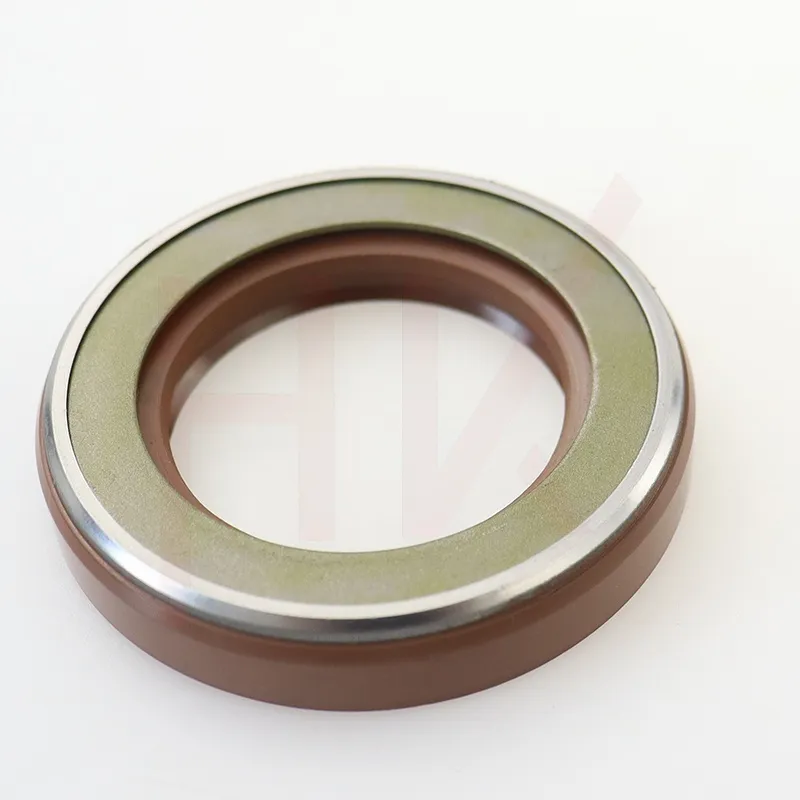10 月 . 31, 2024 13:53 Back to list
Understanding Cassette Oil Seals for Enhanced Engine Performance and Longevity
Understanding Cassette Oil Seals A Comprehensive Overview
Cassette oil seals, often referred to as oil seals or simply seals, play a crucial role in various mechanical systems, particularly in automotive applications. These components are designed to prevent the leakage of lubricants such as oil or grease, ensuring that engines and other machinery operate efficiently and reliably. In this article, we will explore the construction, functionality, benefits, and maintenance of cassette oil seals.
Construction and Design
Cassette oil seals feature a unique design that consists of a flexible sealing lip and a rigid outer casing. The sealing lip is typically made from elastomeric materials such as rubber, which allows it to maintain a tight seal against the rotating shafts. The outer casing is often metal, providing the necessary strength and durability. Many cassette oil seals also come with additional features like dust lips that protect the inner sealing lip from contaminants, enhancing their functionality.
Functionality
The primary function of a cassette oil seal is to prevent lubricant leakage from the machinery it is designed to protect. In an engine, for instance, oil seals are placed at various points, such as around the crankshaft and camshaft. These seals ensure that the oil stays contained within the engine, reducing friction, preventing wear, and maintaining optimal operating temperatures. Furthermore, cassette oil seals help keep dirt and debris out, which could otherwise lead to premature wear and failure of the engine components.
Benefits
cassette oil seal

Employing cassette oil seals in machinery provides numerous benefits
. First and foremost, they contribute to the longevity of the equipment by preventing oil leaks that could lead to lubrication failure. This translates into fewer breakdowns and lower maintenance costs, ultimately improving overall productivity. Additionally, proper sealing limits contamination, which is especially critical in precision machinery where even minor dirt ingress can have significant repercussions on performance and lifespan.Moreover, cassette oil seals are relatively easy to install and replace, making maintenance procedures simpler for technicians. Their availability in various sizes and specifications means they can fit a wide range of applications, from automobiles to industrial machinery.
Maintenance and Inspection
Regular inspection of cassette oil seals should be part of routine maintenance practices. Signs of wear, such as cracks or deformation in the sealing lip, can indicate that a replacement is necessary. Additionally, any noticeable oil leaks around the seal area should prompt immediate investigation, as they may signal that the seal has failed and should be replaced to avoid further damage.
When replacing cassette oil seals, it is essential to use the correct size and type, as the wrong seal can lead to reoccurring leaks and increased wear on associated components. Proper installation is also crucial; seals must be seated correctly to function as intended.
Conclusion
In summary, cassette oil seals are fundamental components in the world of machinery, significantly contributing to the efficiency and longevity of various mechanical systems. Understanding their design, functionality, and maintenance can help ensure optimal performance, prevent costly repairs, and increase the lifespan of equipment. For anyone involved in automotive or industrial maintenance, a sound knowledge of cassette oil seals is essential for maintaining operational efficiency and preventing unnecessary downtime.
-
The Power of Advanced Sealing: High-Pressure Solutions for Modern Machinery
NewsOct.29,2024
-
Optimizing Machinery with High-Performance Oil Seals
NewsOct.29,2024
-
Maximizing Machinery Efficiency with Advanced Oil Seals
NewsOct.29,2024
-
Ensuring Equipment Longevity with Quality Oil Seals
NewsOct.29,2024
-
Enhance Equipment Performance with Quality Oil Seals
NewsOct.29,2024
-
Custom Oil Seals for Specialized Machinery Needs
NewsOct.29,2024
-
The Role of Wiper Seals in Dust Sealing and Oil Protection
NewsOct.20,2024
Products categories
















